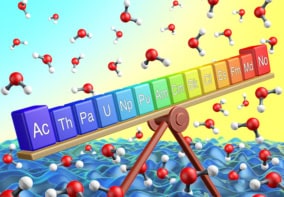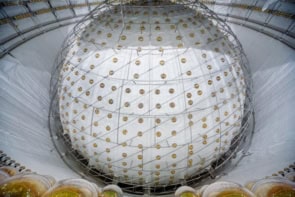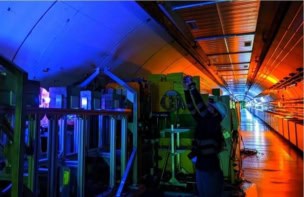With rapid industrialisation and an economy growing at 12 per cent per year, China is fast outstripping its energy resources. And although the rest of the world is turning its back on nuclear energy, China has decided that a massive investment in nuclear power stations is needed to maintain its impressive growth record. By 2010 China hopes to produce 20, 000 MW of electricity from nuclear power. It is the largest nuclear expansion programme planned by any country over the next thirty years.
China is one of the fastest growing nuclear energy markets in the world. Only one per cent of China’s energy needs presently comes from nuclear power and over the next fifteen years China will spend $60 billion on nuclear reactors.
To keep costs down China is pushing hard for foreign investment in its nuclear programmme, and recently it surprised the world’s nuclear industry by signing a series of international agreements. In a $3 billion deal, Russia will supply two 1, 000 MW nuclear reactors to Lianyungang in the eastern Jiangsu province. Canada and France have also agreed to provide financing and technology. Additionally, Atomic Energy of Canada Limited (AECL) has signed contracts to build two 700 MW CANDU reactors at Quinshan.
All the major nuclear power companies are keen to increase sales to China and have offices based in Beijing. And at the end of last year, after years of refusing to do so, President Clinton authorised the sale of US nuclear reactors to China. Presently China’s fledging nuclear industry plans to bring two nuclear reactors on-line every year from 2004.
Discordant policy
Debate has raged in China about how best to proceed with their expansion programme. Until recently, the Chinese government had promoted a two-track approach to its nuclear programme. One part of this policy relies on importing international reactor designs from Europe, Russia, Canada and, shortly, the US. The other approach is for China to develop its own indigenous reactors.
This viewpoint has started to change. Last year in the China Daily, Huangpu Min, director of the Beijing Institute of Nuclear Engineering, argued that China should design its own nuclear power stations. The China Daily newspaper usually indicates ‘official’government policy, and the article has worried overseas firms hoping to sell reactors to China.
All the contracts signed so far contain significant amounts of external financing, hence their attraction to China. Soon the country will standardise on one type of reactor design. When this happens, the company with the winning contract could have an order book of over $60 billion.
China’s Reactors
China was a relatively late-comer to nuclear power. Its first reactor, a Chinese built 300 MW reactor at Qinshan, only went online in 1991. Two years later two French designed reactors, providing power to Hong Kong, went operational at Daya Bay. Presently China is building another three power plants – a French design at Ling’ao, and two CANDU-6 reactors at Qinshan – to come online before the year 2000. These plants will bring capacity up to 6900 MW.
The majority of reactors on order are pressurised water reactors (PWR) in the 600 – 700 MW range similar to those already in operation. China has agreements with all international companies to use as much local material as possible. This is partly to reduce costs to the government, and partly to help build up China’s expertise in reactor production.
For example, China is not yet self-sufficient in nuclear power station technicians and engineers, and the French designed Daya Bay power station still has a number of foreign nationals working at the plant. When the reactor first went operational in 1993, over forty French experts worked at the facility. Now, five years later, after an intensive training programme of Chinese technicians in the UK and France, the number of foreign workers at the plant has been reduced to six and these experts will be replaced soon.
China’s future energy strategy is not just dependent on PWRs, or on domestic requirements. According to a speech by Li Dingfan, vice president of the China National Nuclear Corporation, China is trying to develop a nuclear fuel cycle based on reprocessing. It is also investing heavily in designing an international-level fuel assembly plant. Such a facility would help produce fuel rods for the variety of reactor designs China is currently using. Industry watchers suggest China may market these facilities to international customers. British Nuclear Fuels Limited (BNFL), and its French competitors, are trying to gain contracts related to this design work.
China is also planning to build a large scale commercial reprocessing plant by 2020, and a pilot mixed oxide (MOX) fuel facility in the near future. Construction of a pilot reprocessing plant is already underway in the Lanzhou Nuclear Fuel Complex, along with a spent fuel storage facility. A low- and medium-level disposal plant in the Guangdong province should go operational later this year.
There are many benefits to China developing a large strategic nuclear power programme as the country has extensive natural uranium reserves. Even with massive industrial expansion, it should have enough resources to cater for domestic demand, with an additional surplus available for export.
The Chinese energy market will be the most important source of nuclear contracts over the next thirty years. However, it is unlikely that the international power companies presently competing for contracts, are going to make large profits. It is more likely that China will promote one of its own reactor designs in the near future. The only way for international firms to receive large government contracts will be to strike a domestic manufacturing deal with China’s power industry, and hope that such a highly publicized deal will allow them to sell other reactors at a higher profit margin. Alternatively, and more likely, China may enter the market with a highly competitively priced reactor design of its own.



